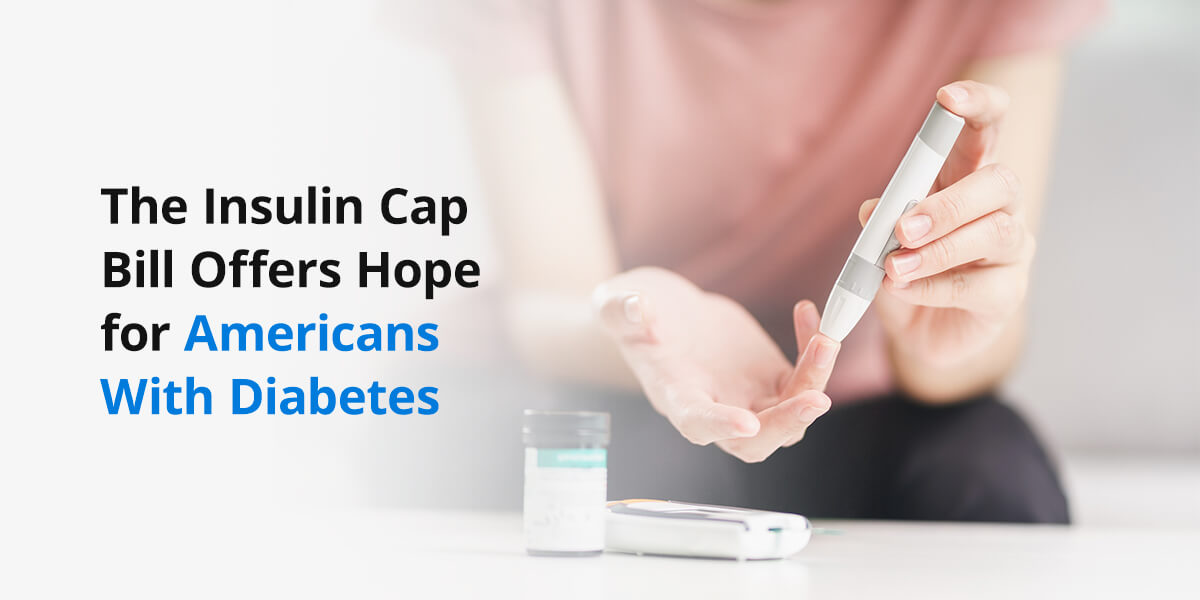
The cost of insulin has long been a pain point for diabetic Americans. Now a solution may be in sight.
The House of Representatives passed an insulin cap bill at the end of March 2022. This bill would limit the out-of-pocket cost of insulin for beneficiaries of Medicare Part D as well as some group and individual healthcare plans. Under this bill, patients' monthly insulin costs would have been limited to $35 or 25% of the plan's negotiated price, whichever is lower.
However, this bill never cleared the Senate as a standalone measure. Instead, Congress later incorporated a limited insulin-cost cap for Medicare recipients into the Inflation Reduction Act (IRA). The IRA caps copayments at $35 per month for insulin and is the limit that was sought in the original Affordable Insulin bill passed by the House of Representatives in 2022.
There are two similar bills introduced since the Senate rejected the 2022 bill. In the Senate this is called the Affordable Insulin Now Act of 2023 while the House of Representatives introduced a new version of the Affordable Insulin Now Act. These bills propose the same insulin caps as the 2022 House bill and have been referred to the Senate Committee on Banking, Housing, and Urban Affairs and the House Subcommittee on Health, respectively, for further review.
While these bills could alleviate the elevated cost of insulin, it could come at another price for Americans and healthcare providers.
What Is Insulin and Why Do People Need It?
Insulin production plays a vital role in overall health. As the body digests carbohydrates, it turns them into glucose that releases into the bloodstream. The pancreas produces insulin, a hormone that lets muscle, fat and liver cells absorb glucose to use as energy. Without insulin to signal the cells to absorb glucose, they can't convert it to energy.
The body's inability to effectively use glucose is called diabetes. This chronic disease is the seventh highest cause of death in the U.S. and can lead to several other health issues, including:
-
Vision loss
-
Heart disease
-
Kidney disease
Diabetes is divided into either Type 1 or Type 2 depending on the underlying cause. Type 1 diabetes is the result of an autoimmune disease whereby the immune system attacks the pancreas, making insulin production impossible. With Type 2 diabetes, the pancreas still produces insulin; however, the body doesn't respond to it effectively.
Besides living an active and healthy lifestyle and taking other prescribed medications, taking insulin injections is the primary tool for managing diabetes. Injections of insulin provide the necessary signals to convert glucose into energy and regulate blood glucose levels. People with Type 1 diabetes must use supplemental insulin to manage their body's insulin absorption, and some with Type 2 diabetes may also need injections to manage their blood glucose levels.

Why the Insulin Bills Are Being Proposed?
Unfortunately, the exorbitant out-of-pocket cost of insulin can make this necessary treatment prohibitively expensive. Patients with insurance still typically pay a percentage of insulin's list price, which increases as the cost of insulin rises. Patients without insurance must pay retail prices, which can be as high as $1,837.62 per vial of insulin. Many patients need at least two or three vials per month. Soaring prices have motivated many diabetic patients to ration their injections or skip them altogether, actions that risk causing other serious health concerns.
The proposed insulin cap bills address this financial burden and would enable more Americans to afford life-saving insulin injections. Both current versions of the Affordable Insulin Now Act may usher in more talks to curb the rising prices of prescription drugs, which would subsequently lower the out-of-pocket costs.
U.S. House Passes Bill to Cap Insulin
The road to passing the Affordable Insulin Now Act has been long. Here's what happened to get the bill passed:
-
The U.S. House passed the Build Back Better Bill: The Build Back Better Bill included an insulin price cap bill in 2021 that limited the out-of-pocket cost of insulin to $35 for a month's supply. Although the House passed the bill on November 19, 2021, it stalled in the Senate.
-
A similar bill arose in the U.S. Senate: Democratic Senator Raphael Warnock of Georgia introduced the Affordable Insulin Now Act on February 17, 2022. This bill caps the price of insulin products for private health plans at the lesser of $35 or 25% of the negotiated price. For Medicare beneficiaries, the same cap would kick in after a period where the cap remains at $35. The Senate has not yet voted on this bill.
-
U.S. House Representatives introduced the Affordable Insulin Now Act: Three Democratic representatives introduced the stand-alone insulin price cap bill in the House in February 2022.
-
The U.S. House passed the Affordable Insulin Now Act: On March 31, 2022, the House passed the bill, though it was later rejected by the Senate.
Two nearly identical bills have since been introduced: Senator Raphael Warnock introduced a new version of his proposed legislation dubbed the
Affordable Insulin Now Act of 2023. Meanwhile the House of Representations introduced a new version of the
Affordable Insulin Now Act. Both are currently sitting in separate committees and subcommittees subject to further review.
Who Benefits from the Insulin Bills?
If the bills become law, diabetic Americans could pay up to thousands of dollars less for their insulin products every month. The Affordable Insulin Now Act would benefit the following groups in particular:
1. Diabetic Adults and Children
Of the over 37 million U.S. adults with diabetes, approximately 7.4 million rely on insulin to manage their blood glucose levels. The prevalence of diabetes among children and adolescents has risen dramatically. According to the most recent statistics from the Centers for Disease Control (CDC), about 210,000 children and adolescents in the U.S. live with diabetes.
The gross amount each person spent on insulin increased by $2,841 from 2012 to 2016. The list price per millimeter of insulin also increased by an average of 1.5% annually from 2016 to 2018. If this trend continues, insulin list prices could continue to skyrocket — according to the American Diabetes Association, the inflation adjusted cost of insulin rose 24% between 2017 and 2022.
The proposed insulin cap bills will make insulin significantly more affordable for these patients.
2. Insulin Manufacturers
A cap on insulin prices may also positively impact insulin manufacturers. Passing a national price cap could turn politicians' focus away from incentivizing insulin manufacturers to lower their prices.
The Affordable Insulin Now Act would also allow more Americans to purchase the insulin they need rather than ration the drug or go without it. This increase in sales would provide insulin manufacturers with more revenue.
Who Might Be Negatively Impacted by Insulin Bill?
Despite the clear benefits for diabetic Americans, the effects of the insulin cap bill may not be all positive. Three main groups could be adversely affected by the proposed insulin cap bill:
-
Healthcare providers: While the Affordable Insulin Now Act caps patient cost-sharing, it does not address the list price of insulin products. With patients paying less, the rest of the cost falls on the healthcare providers. Private insurers would have to find ways to pay for their enrollees' insulin products.
-
Healthcare enrollees: Facing higher insulin costs, private insurers would likely want to shift those costs back to their enrollees. Healthcare premiums would likely increase for those insured privately.
-
The uninsured with diabetes: If the insulin price cap bills reduce the political pressure to address the rising list price of insulin, uninsured patients with diabetes could continue to suffer financially.
Future of Rx Prices Due to Insulin Bill Precedent
Upward trends in insulin list prices may have a broader impact on prescription drug costs.
Some opponents argue that the Affordable Insulin Now Act isn't enough to curb drug list prices. However, advocates say that the bill would set a precedent that might encourage governmental caps on the astronomical cost of prescription drugs. In fact, several senators are working on a bipartisan bill that could bring further changes to prescription drug prices.
Contact The Phia Group, LLC for Healthcare Cost-Containment Services
While it's still unclear whether the Affordable Insulin Now Act will become law, businesses should prepare to handle the increasing cost of insuring their employees.
With The Phia Group, LLC’s cost containment services, your company can keep its healthcare coverage costs low. The Phia Group, LLC is a healthcare cost containment consultancy firm working to keep the cost of healthcare low for businesses and employees. We offer services like consulting, plan document drafting, subrogation, claim negotiation, and more.
Learn more about The Phia Group, LLC and our services or
contact us today to get started.